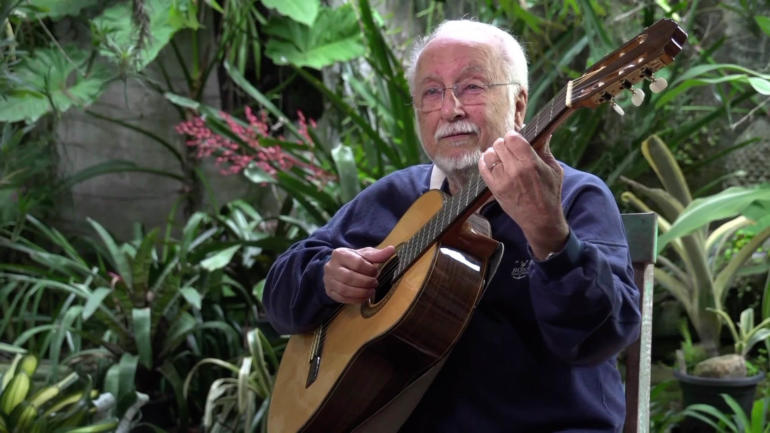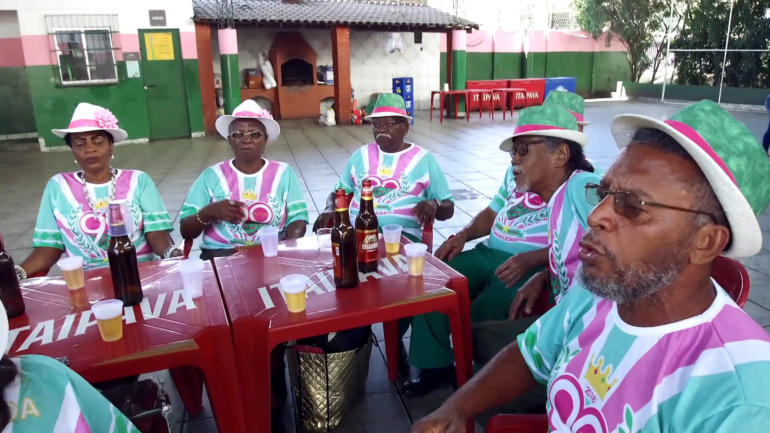Part of the CGTN special series Rediscovering the New World
The history of Rio de Janeiro’s samba school begins in the slums back in the 1920s, when the first ones were founded. Over the years, they have come to represent the spirit of their communities.
Performers are featured in the annual carnival parades, which have become a big attraction and are good for business, employing lots of people and drawing worldwide attention. The samba schools in Rio de Janeiro are deeply connected to the city’s slums – the favelas – but every year, their carnival parades bring together people of all social classes and from all over the world.
The “Old Guards” are the veterans’ groups formed by the school’s elders – every school of samba has an Old Guard. Being part of a community’s samba school is reason for pride and a way to reaffirm one’s cultural identity – something not always accepted by the establishment.
“My grandmother used to tell me that in the beginning the samba schools were marginalized. Police wouldn’t let them parade and arrest them”, said the president of the Old Guard at Mangueira – one of the most traditional schools in Rio – Gilda Moreira.
“But then the elite discovered it and saw a joy of life they didn’t have with their money and their positions. And nowadays you see people paying a lot for a costume to parade with us.”
Brazil’s “Old Guards” at Mangueira school in Rio de Janeiro
Modern samba first appeared in Rio de Janeiro in the early 20th century combining traditional rhythms brought to the city by migrants; mixed with African beats and styles already popular in Rio – like the polka.
It grew to be a key expression of Brazilian culture – to this day attracting crowds to parties like the Workers’Samba – organized every Monday in Rio by popular ‘sambista’ – ‘a samba artist’ – Moacyr Luz.
“Samba is like state of mind. Sambistas wear samba clothes, use samba words and eat samba food, which is heavy… for people to eat together while partying”, said Moacyr Luz.
“It’s the bow of Brazilian culture. Samba was also the basis for the creation of the Bossa Nova which is a more refined version of the rhythm. But it’s also samba.”
The Bossa Nova was born in Copacabana Beach neighbourhood, in the late 1950’s, as a new musical style bringing together the traditional Samba from Rio de Janeiro’s slums and the jazz heard by the city’s middle and upper classes.

Guitar player Roberto Menescal was one of the founders of the Bossa Nova musical movement in Rio de Janeiro, in the late 1950s.
Guitar player Roberto Menescal was part of the group that created the Bossa Nova and saw it spread across the globe. Menescal wrote some of the Bossa Nova key tunes, like “O Barquinho” – Little Boat.
“We liked jazz a lot, for the music and for the attitude of the jazz musicians. It was the picture we got from the movies: cool musicians with their glass of whisky and cigarettes… So we bought into the ideas of their music and their attitude… and mixed that with the tradition of samba, that brought us beautiful melodic lines and lyrics. And then João Gilberto came up the Bossa Nova beat in the guitar”, told Roberto Menescal.
Across generations and social classes, samba is a revealing feature of Brazilian culture – a voice that sums up in the same beat the different voices of a country.
 CGTN America
CGTN America
 The “Old Guards” are the veterans’ groups formed by the school’s elders – every school of samba has an Old Guard.
The “Old Guards” are the veterans’ groups formed by the school’s elders – every school of samba has an Old Guard.

